Related Research Articles
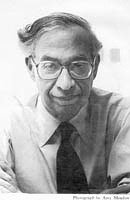
Donald Allen Wollheim was an American science fiction editor, publisher, writer, and fan. As an author, he published under his own name as well as under pseudonyms, including David Grinnell, Martin Pearson, and Darrell G. Raynor. A founding member of the Futurians, he was a leading influence on science fiction development and fandom in the 20th-century United States. Ursula K. Le Guin called Wollheim "the tough, reliable editor of Ace Books, in the Late Pulpalignean Era, 1966 and '67", which is when he published her first two novels in Ace Double editions.
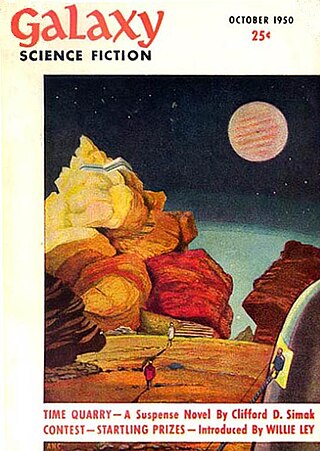
Galaxy Science Fiction was an American digest-size science fiction magazine, published in Boston from 1950 to 1980. It was founded by a French-Italian company, World Editions, which was looking to break into the American market. World Editions hired as editor H. L. Gold, who rapidly made Galaxy the leading science fiction magazine of its time, focusing on stories about social issues rather than technology.

The Magazine of Fantasy & Science Fiction is a U.S. fantasy and science-fiction magazine, first published in 1949 by Mystery House, a subsidiary of Lawrence Spivak's Mercury Press. Editors Anthony Boucher and J. Francis McComas had approached Spivak in the mid-1940s about creating a fantasy companion to Spivak's existing mystery title, Ellery Queen's Mystery Magazine. The first issue was titled The Magazine of Fantasy, but the decision was quickly made to include science fiction as well as fantasy, and the title was changed correspondingly with the second issue. F&SF was quite different in presentation from the existing science-fiction magazines of the day, most of which were in pulp format: it had no interior illustrations, no letter column, and text in a single-column format, which in the opinion of science-fiction historian Mike Ashley "set F&SF apart, giving it the air and authority of a superior magazine".

Jo Walton is a Welsh and Canadian fantasy and science fiction writer and poet. She is best known for the fantasy novel Among Others, which won the Hugo and Nebula Awards in 2012, and Tooth and Claw, a Victorian era novel with dragons which won the World Fantasy Award in 2004. Other works by Walton include the Small Change series, in which she blends alternate history with the cozy mystery genre, comprising Farthing, Ha'penny and Half a Crown. Her fantasy novel Lifelode won the 2010 Mythopoeic Award, and her alternate history My Real Children received the 2015 Tiptree Award.

Kate Wilhelm was an American author. She wrote novels and stories in the science fiction, mystery, and suspense genres, including the Hugo Award–winning Where Late the Sweet Birds Sang. Wilhelm established the Clarion Workshop along with her husband Damon Knight and writer Robin Scott Wilson.

Science Fantasy, which also appeared under the titles Impulse and SF Impulse, was a British fantasy and science fiction magazine, launched in 1950 by Nova Publications as a companion to Nova's New Worlds. Walter Gillings was editor for the first two issues, and was then replaced by John Carnell, the editor of New Worlds, as a cost-saving measure. Carnell edited both magazines until Nova went out of business in early 1964. The titles were acquired by Roberts & Vinter, who hired Kyril Bonfiglioli to edit Science Fantasy; Bonfiglioli changed the title to Impulse in early 1966, but the new title led to confusion with the distributors and sales fell, though the magazine remained profitable. The title was changed again to SF Impulse for the last few issues. Science Fantasy ceased publication the following year, when Roberts & Vinter came under financial pressure after their printer went bankrupt.

Unknown was an American pulp fantasy fiction magazine, published from 1939 to 1943 by Street & Smith, and edited by John W. Campbell. Unknown was a companion to Street & Smith's science fiction pulp, Astounding Science Fiction, which was also edited by Campbell at the time; many authors and illustrators contributed to both magazines. The leading fantasy magazine in the 1930s was Weird Tales, which focused on shock and horror. Campbell wanted to publish a fantasy magazine with more finesse and humor than Weird Tales, and put his plans into action when Eric Frank Russell sent him the manuscript of his novel Sinister Barrier, about aliens who own the human race. Unknown's first issue appeared in March 1939; in addition to Sinister Barrier, it included H. L. Gold's "Trouble With Water", a humorous fantasy about a New Yorker who meets a water gnome. Gold's story was the first of many in Unknown to combine commonplace reality with the fantastic.
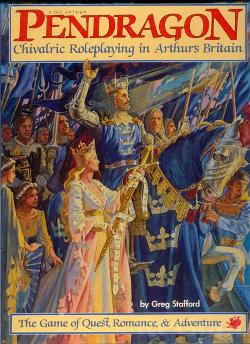
Pendragon, or King Arthur Pendragon, is a Tabletop role-playing game (RPG) in which players take the role of knights performing chivalric deeds in the tradition of Arthurian legend. It was originally written by Greg Stafford and published by Chaosium, then was acquired by Green Knight Publishing, who in turn passed on the rights to White Wolf Publishing in 2004. White Wolf sold the game to Stewart Wieck in 2009. Wieck formed Nocturnal Media, who updated and reissued the 5th edition originally published by White Wolf. In 2018, it returned to Chaosium.

Infinity Science Fiction was an American science fiction magazine, edited by Larry T. Shaw, and published by Royal Publications. The first issue, which appeared in November 1955, included Arthur C. Clarke's "The Star", a story about a planet destroyed by a nova that turns out to have been the Star of Bethlehem; it won the Hugo Award for that year. Shaw obtained stories from some of the leading writers of the day, including Brian Aldiss, Isaac Asimov, and Robert Sheckley, but the material was of variable quality. In 1958 Irwin Stein, the owner of Royal Publications, decided to shut down Infinity; the last issue was dated November 1958.

Judith Moffett is an American author and academic. She has published poetry, nonfiction, science fiction, and translations of Swedish literature. She has been awarded grants and fellowships from the National Endowment for the Arts and the National Endowment for the Humanities and presented a paper on the translation of poetry at a 1998 Nobel Symposium.
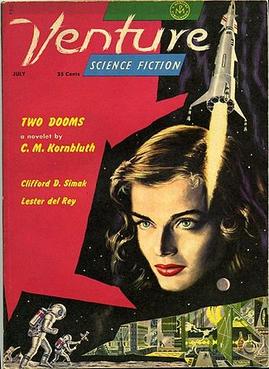
Venture Science Fiction was an American digest-size science fiction magazine, first published from 1957 to 1958, and revived for a brief run in 1969 and 1970. Ten issues were published of the 1950s version, with another six in the second run. It was founded in both instances as a companion to The Magazine of Fantasy & Science Fiction. Robert P. Mills edited the 1950s version, and Edward L. Ferman was editor during the second run. A British edition appeared for 28 issues between 1963 and 1965; it reprinted material from The Magazine of Fantasy & Science Fiction as well as from the US edition of Venture. There was also an Australian edition, which was identical to the British version but dated two months later.

The Mammoth Book of Extreme Science Fiction is a science fiction anthology edited by Mike Ashley, originally published in 2006 in the United Kingdom by Robinson, an imprint of Constable & Robinson Ltd. It was reprinted in the United States, also in 2006, by Carroll & Graf, and imprint of Avalon Publishing Group. It is one of a long series of "Mammoth Book" short story collections edited by Ashley and published by Robinson, most of which have themes outside of science fiction.
Michael Raymond Donald Ashley is a British bibliographer, author and editor of science fiction, mystery, and fantasy.

Imaginative Tales was an American fantasy and science fiction magazine launched in September 1954 by William Hamling's Greenleaf Publishing Company. It was created as a sister magazine to Imagination, which Hamling had acquired from Raymond A. Palmer's Clark Publishing. Imaginative Tales began as a vehicle for novel-length humorous fantasy, early issues featuring stories by Charles F. Myers and Robert Bloch. After a year, Hamling switched the focus to science fiction and it became similar in content to Imagination, publishing routine space operas. In 1958, with public interest in space high, Hamling changed the title to Space Travel, but there was little effect on sales. Magazine circulation was suffering because of the rise of the paperback, and the liquidation in 1957 of American News Company, a major magazine distributor, made it even harder for small magazines to survive. Hamling eventually ceased publication of both Imaginative Tales and Imagination in 1958, preferring to invest the money in Rogue, a men's magazine he had started in imitation of Playboy in 1955.

George Edwards Theodore Goodridge Roberts was a Canadian novelist and poet. He was the author of thirty-four novels and over one hundred published stories and poems.
Diana Wynne Jones was a British writer of fantasy novels for children and adults. She wrote a small amount of non-fiction.

Marvel Science Stories was an American pulp magazine that ran for a total of fifteen issues in two separate runs, both edited by Robert O. Erisman. The publisher for the first run was Postal Publications, and the second run was published by Western Publishing; both companies were owned by Abraham and Martin Goodman. The first issue was dated August 1938, and carried stories with more sexual content than was usual for the genre, including several stories by Henry Kuttner, under his own name and also under pseudonyms. Reaction was generally negative, with one reader referring to Kuttner's story "The Time Trap" as "trash". This was the first of several titles featuring the word "Marvel", and Marvel Comics came from the same stable in the following year.

Science-fiction and fantasy magazines began to be published in the United States in the 1920s. Stories with science-fiction themes had been appearing for decades in pulp magazines such as Argosy, but there were no magazines that specialized in a single genre until 1915, when Street & Smith, one of the major pulp publishers, brought out Detective Story Magazine. The first magazine to focus solely on fantasy and horror was Weird Tales, which was launched in 1923, and established itself as the leading weird fiction magazine over the next two decades; writers such as H.P. Lovecraft, Clark Ashton Smith and Robert E. Howard became regular contributors. In 1926 Weird Tales was joined by Amazing Stories, published by Hugo Gernsback; Amazing printed only science fiction, and no fantasy. Gernsback included a letter column in Amazing Stories, and this led to the creation of organized science-fiction fandom, as fans contacted each other using the addresses published with the letters. Gernsback wanted the fiction he printed to be scientifically accurate, and educational, as well as entertaining, but found it difficult to obtain stories that met his goals; he printed "The Moon Pool" by Abraham Merritt in 1927, despite it being completely unscientific. Gernsback lost control of Amazing Stories in 1929, but quickly started several new magazines. Wonder Stories, one of Gernsback's titles, was edited by David Lasser, who worked to improve the quality of the fiction he received. Another early competitor was Astounding Stories of Super-Science, which appeared in 1930, edited by Harry Bates, but Bates printed only the most basic adventure stories with minimal scientific content, and little of the material from his era is now remembered.
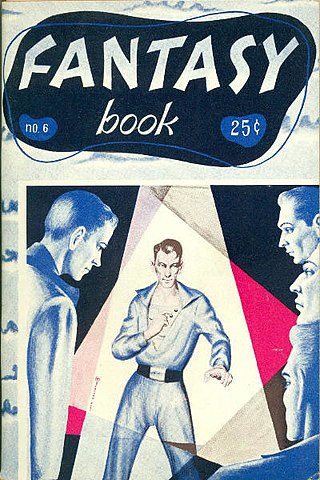
Fantasy Book was a semi-professional American science fiction magazine that published eight issues between 1947 and 1951. The editor was William Crawford, and the publisher was Crawford's Fantasy Publishing Company, Inc. Crawford had problems distributing the magazine, and his budget limited the quality of the paper he could afford and the artwork he was able to buy, but he attracted submissions from some well-known writers, including Isaac Asimov, Frederik Pohl, A. E. van Vogt, Robert Bloch, and L. Ron Hubbard. The best-known story to appear in the magazine was Cordwainer Smith's first sale, "Scanners Live in Vain", which was later included in the first Science Fiction Hall of Fame anthology, and is now regarded as one of Smith's finest works. Jack Gaughan, later an award-winning science fiction artist, made his first professional sale to Fantasy Book, for the cover illustrating Smith's story.

Marvel Tales and Unusual Stories were two related American semi-professional science fiction magazines published in 1934 and 1935 by William L. Crawford. Crawford was a science fiction fan who believed that the pulp magazines of the time were too limited in what they would publish. In 1933, he distributed a flyer announcing Unusual Stories, and declaring that no taboos would prevent him from publishing worthwhile fiction. The flyer included a page from P. Schuyler Miller's "The Titan", which Miller had been unable to sell to the professional magazines because of its sexual content. A partial issue of Unusual Stories was distributed in early 1934, but Crawford then launched a new title, Marvel Tales, in May 1934. A total of five issues of Marvel Tales and three of Unusual Stories appeared over the next two years.
References
- 1 2 Dodds, George T. (2002). "SF Site Reviews: The Merriest Knight". SFSite.com.
- ↑ "The Merriest Knight: The Collected Arthurian Tales of Theodore Goodridge Roberts". Amazon.ca. Retrieved May 12, 2011.
- ↑ https://www.blackgate.com/2013/03/10/new-treasures-the-merriest-knight-the-collected-arthurian-tales-of-theodore-goodridge-roberts/
- ↑ https://www.isfdb.org/cgi-bin/title.cgi?858192